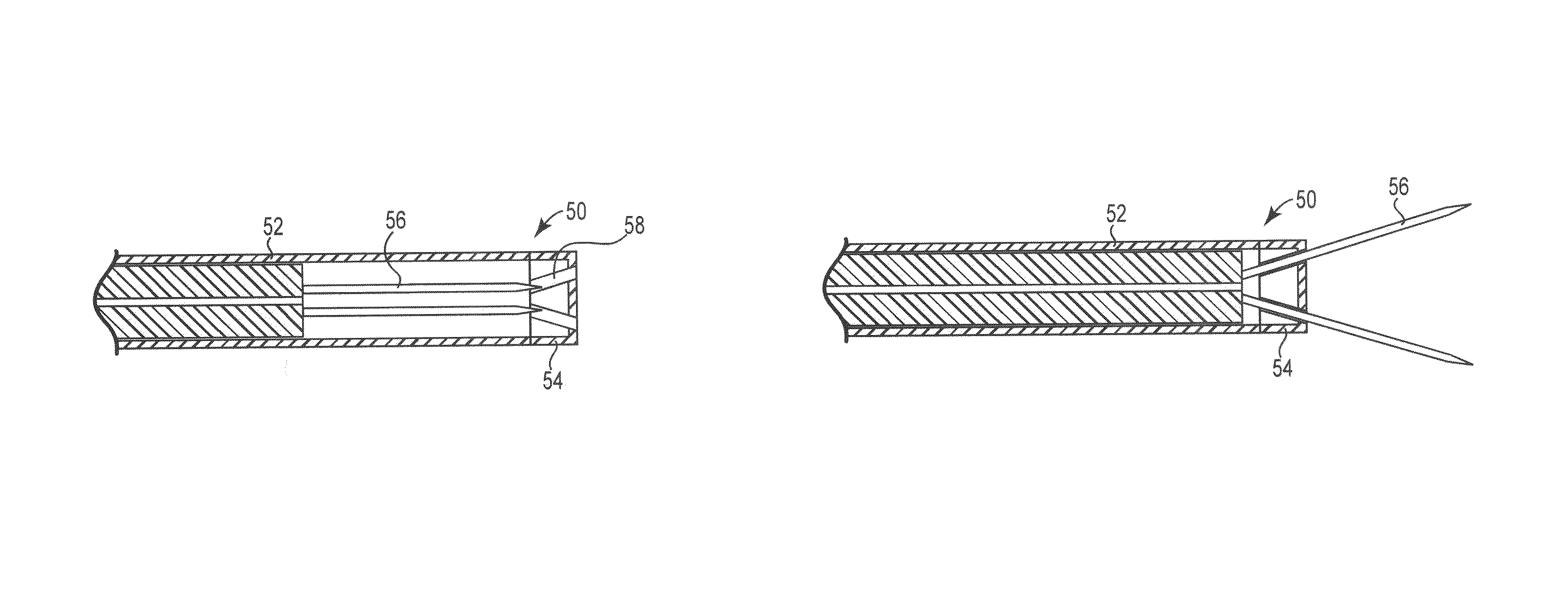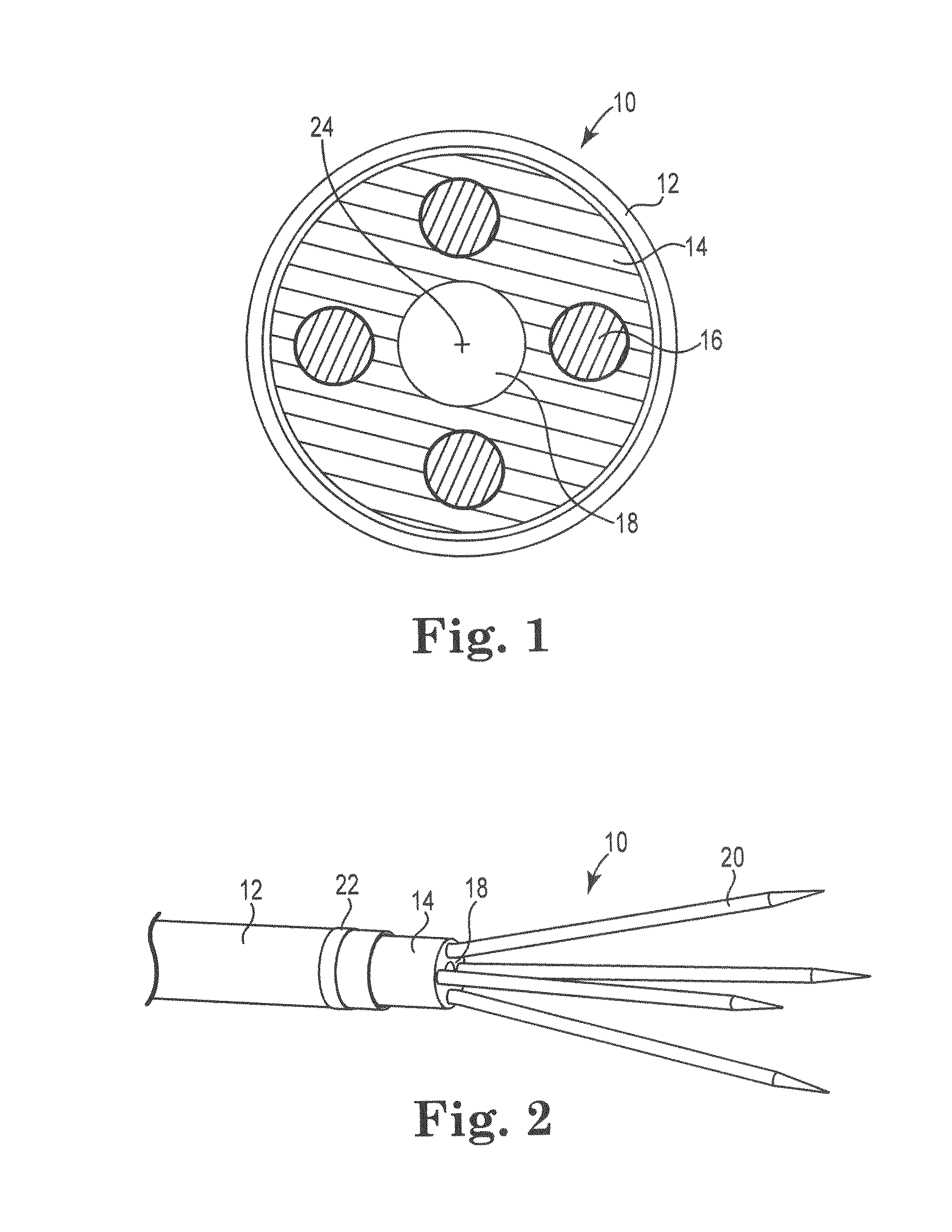Paravalvular leak closure devices and methods
a technology for paravalvular leaks and leak closures, applied in the field of devices and methods for repairing paravalvular leaks, can solve the problems of high invasiveness of valve surgery, potential for paravalvular leakage, and potential for gaps or spaces between the stent frame, so as to reduce the size of the gap, and reduce the size of the space
- Summary
- Abstract
- Description
- Claims
- Application Information
AI Technical Summary
Benefits of technology
Problems solved by technology
Method used
Image
Examples
Embodiment Construction
[0029]Referring now to the Figures, wherein the components are labeled with like numerals throughout the several Figures, and initially to FIG. 1, one embodiment of a section through the working length of an ablation catheter 10 is illustrated. In general, the working length of the ablation catheter 10 includes an outer tube or sheath 12, which can be made of a flexible material such as nylon, PTFE, PEBAX, or the like, or any combination or blend of such materials. Additionally, sheath 12 can be reinforced with a braid, coil, or other structure to increase its radial stiffness. Outer tube or sheath 12 can at least partially surround an inner tube 14 that is preferably made of a flexible, insulating material, although it can be made of a different type of material. The inner tube 14 includes at least one needle opening or depression 16, each of which is sized to mate with a proximal end of an ablation element: such as a needle or needle electrode. Although four of such needle opening...
PUM
 Login to View More
Login to View More Abstract
Description
Claims
Application Information
 Login to View More
Login to View More - R&D
- Intellectual Property
- Life Sciences
- Materials
- Tech Scout
- Unparalleled Data Quality
- Higher Quality Content
- 60% Fewer Hallucinations
Browse by: Latest US Patents, China's latest patents, Technical Efficacy Thesaurus, Application Domain, Technology Topic, Popular Technical Reports.
© 2025 PatSnap. All rights reserved.Legal|Privacy policy|Modern Slavery Act Transparency Statement|Sitemap|About US| Contact US: help@patsnap.com



